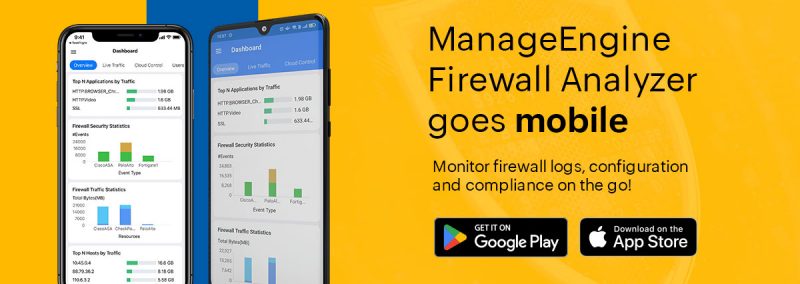The onslaught of the novel COVID-19 has caught businesses off guard, sending many of them into a tailspin. To survive this, most businesses are considering the idea of remote work, and some have already implemented work from home policies.
Under these circumstances, a virtual private network (VPN) is an organization’s best bet for providing access to business-critical services remotely and to avert operational disasters. But are all businesses equipped to monitor and ensure robust functioning of their VPN connections?
Know what’s at stake when you neglect VPN monitoring
Compromising on monitoring your VPN connections could be disastrous on multiple levels. Here are some major factors that could turn the tide against you:
-
Confidential data appropriation
-
Loss of productivity
-
Adverse impact on revenue
-
Disruption of business-critical services
-
Damage to brand and customer service reputation due to service disturbances
VPN best practices to stay ahead of the curve
These are some proven methodologies that, when adhered to, can ensure robust functioning of your VPN connections and help thwart operational disasters:
-
Strong encryption: Data encryption within VPN tunnels is a necessity that can’t be ignored. Encryption augments security and minimizes the chances of data theft.
-
Multi-level authentication: Setting up a indecipherable password for each VPN connection and configuring multi-level authentication profiles such as two-factor authentication helps improve security.
-
Device vulnerability check: It is imperative to install an anti-virus solution on each VPN client and check for the vulnerability of the respective device before a connection is established. This helps reduce the chances of malware infection on the VPN client.
-
Block access to hostile IPs: Landing on malicious IPs could jeopardize your VPN network. A good solution is to grant access to only business-critical services and deny access to malicious IPs.
-
Redundant site-to-site VPN connections for failover: A site-to-site VPN connection has two VPN tunnels. By employing a site-to-site VPN connection, you can perform maintenance on one VPN tunnel while traffic continues to flow in the second tunnel. This ensures high availability.
-
A trustworthy internet service provider (ISP): The stability of a VPN connection depends on constant availability of the internet. This is why it’s recommended that you choose an ISP with a good service reputation.
-
Presence of robust network infrastructure: Having a best-in-class network infrastructure, hardware-wise, will bolster the smooth functioning of your VPN connections. This is because VPN throughput depends on the hardware capabilities of the router.
-
Monitor VPN bandwidth: It’s imperative to track the bandwidth of your VPN connections to allocate sufficient bandwidth for vital applications and limit the consumption of trivial ones.
COVID-19 is rapidly driving a new status quo, one that encourages working from home, for those organizations that can support it. In the coming days, even more businesses are likely to adopt work-from-home policies. Hence, managing your VPN connections using the best practices above will help businesses in the face of today’s adversity as well as tomorrow’s opportunity.
* This blog post was originally published on CybersecAsia *

